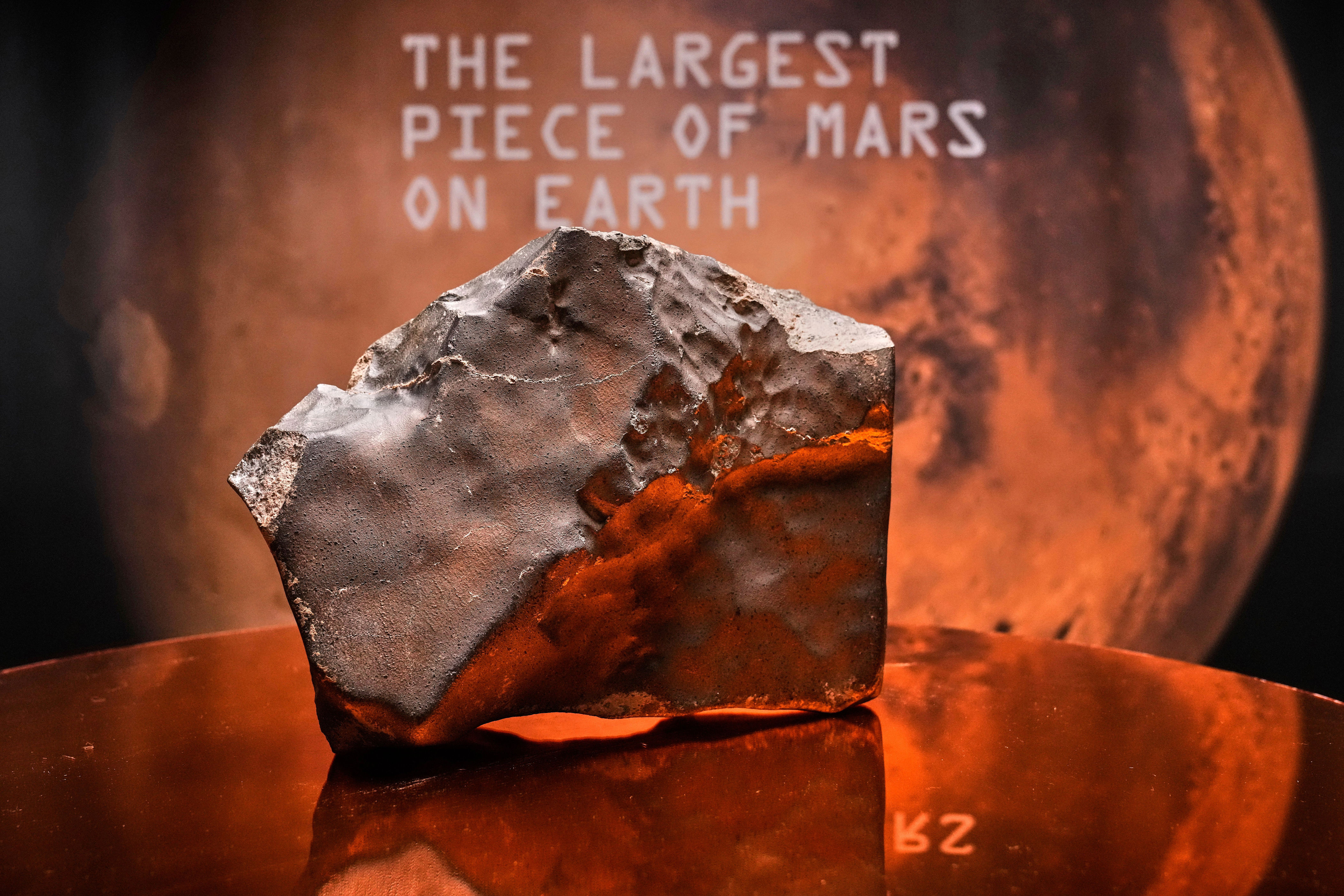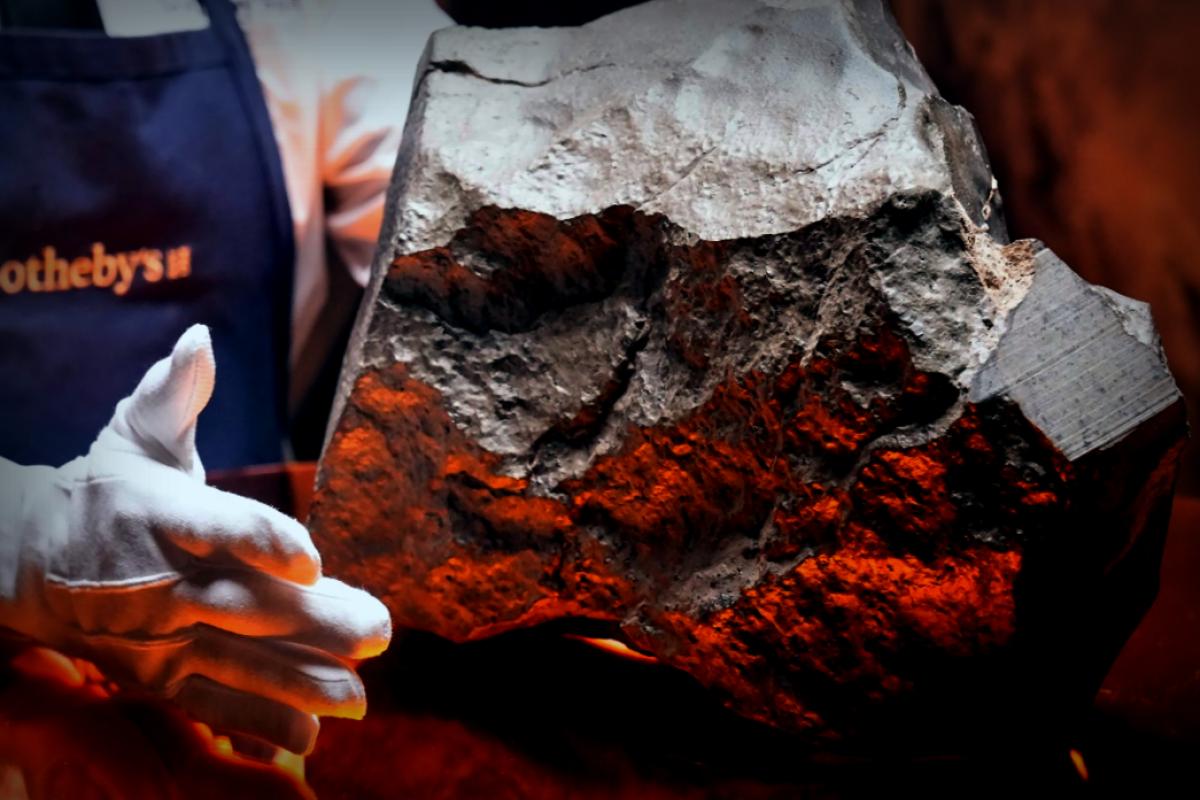Meet the heaviest space rock you’ve ever heard of – a staggering 54-pound (25-kilogram) meteorite that proudly holds the title of the largest Martian rock discovered on our planet. This exclusive piece of interplanetary real estate is currently under investigation in Niger.
This colossal rock sold for over $5 million at a New York auction back in July, setting a brand new record!
Now, the officials in Niger, where this reddish-brown wonder was found, are digging into the situation, labeling it as “possible illicit international trafficking.” They suspect that it may have been smuggled out of the country.
Sotheby’s, the auction house that facilitated this record-breaking sale, stated that this meteorite, named NWA 16788, was launched into space from Mars courtesy of a massive asteroid impact, making the 140-million-mile (225-million-kilometer) trip to reach Earth.
This once-in-a-lifetime find occurred back in November 2023 when an anonymous meteorite hunter stumbled upon it in the Sahara desert, located in northwestern Niger.
The identities of both the finder and the buyer remain under wraps.
Meteorite hunting has become quite the trend in arid regions like Niger. While meteorites can drop anywhere around the globe, the Sahara is gaining fame as an ideal spot for finding these cosmic treasures. The dry conditions and favorable climate contribute significantly to their preservation.
Often, hunters are on the lookout for these stellar rocks to sell to enthusiastic collectors or aiding scientific research. The rarest ones, naturally, are those from Mars or even the moon.
According to a release in the Heritage academic journal, after its initial sale, the meteorite rolled into the hands of an international dealer and eventually reached a private gallery in Italy. Fascinated scientists from the University of Florence had a chance to study it in 2024, investigating its origins prior to its arrival on Earth.
Before it hit the auction floor in New York, the meteorite was even briefly showcased in Rome.
What’s the Deal with Niger’s Investigation?
Following this considerable sale, questions arose regarding how the meteorite was actually up for auction.
The Nigerien government decided to initiate an investigation in July, mentioning that the circumstances surrounding the discovery and sale resembled “illicit international trafficking.”

Just last week, President Abdourahamane Tiani took steps by suspending the export of “precious stones, semi-precious stones, and meteorites countrywide” in hopes to improve tracking and provenance.
Sotheby’s reassured everyone that the meteorite was exported from Niger compliant with all established international protocols.
“Just like every item we auction, we had all necessary documentation neatly ordered at every step along its journey, following the best practices and adhering to the requirements from involved countries,” stated Sotheby’s.
As of now, whisper on the Nigerien officials’ responses remains unanswered.
The Legal Landscape of Meteorite Trade
Despite international agreements in place for regulating the sale of cultural artifacts, the matter of meteorites seems to be a gray area.
Patty Gerstenblith, a legit expert in cultural heritage law and illicit trade issues, says that meteorites might qualify as cultural property under the UNESCO convention on cultural property, which Niger and the U.S. both have signed up for.
Yet, Gerstenblith points out that Niger needs to establish ownership of the meteorite and prove it was taken unlawfully. Just because it got exported without authorization, it doesn’t mean the meteorite is illegal in the U.S.
“If the meteorite wasn’t stolen and was properly declared upon its arrival in the U.S., it looks unlikely that Niger can claim it back,” she explained.
Some countries like Morocco insist on restitution for any discovered artifacts found on their lands. However, enforcing these policies is tough due to the vast deserts and informal trade networks.



















